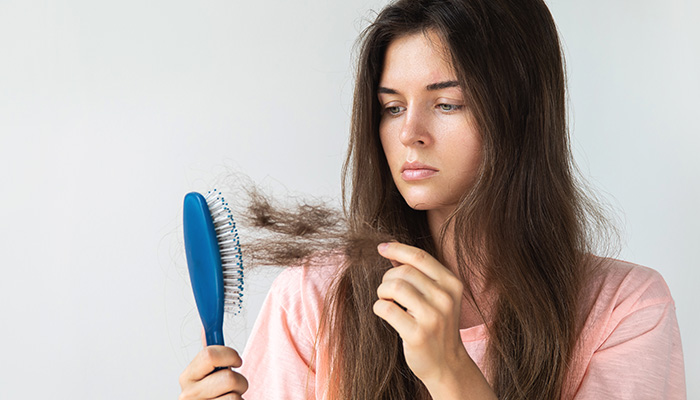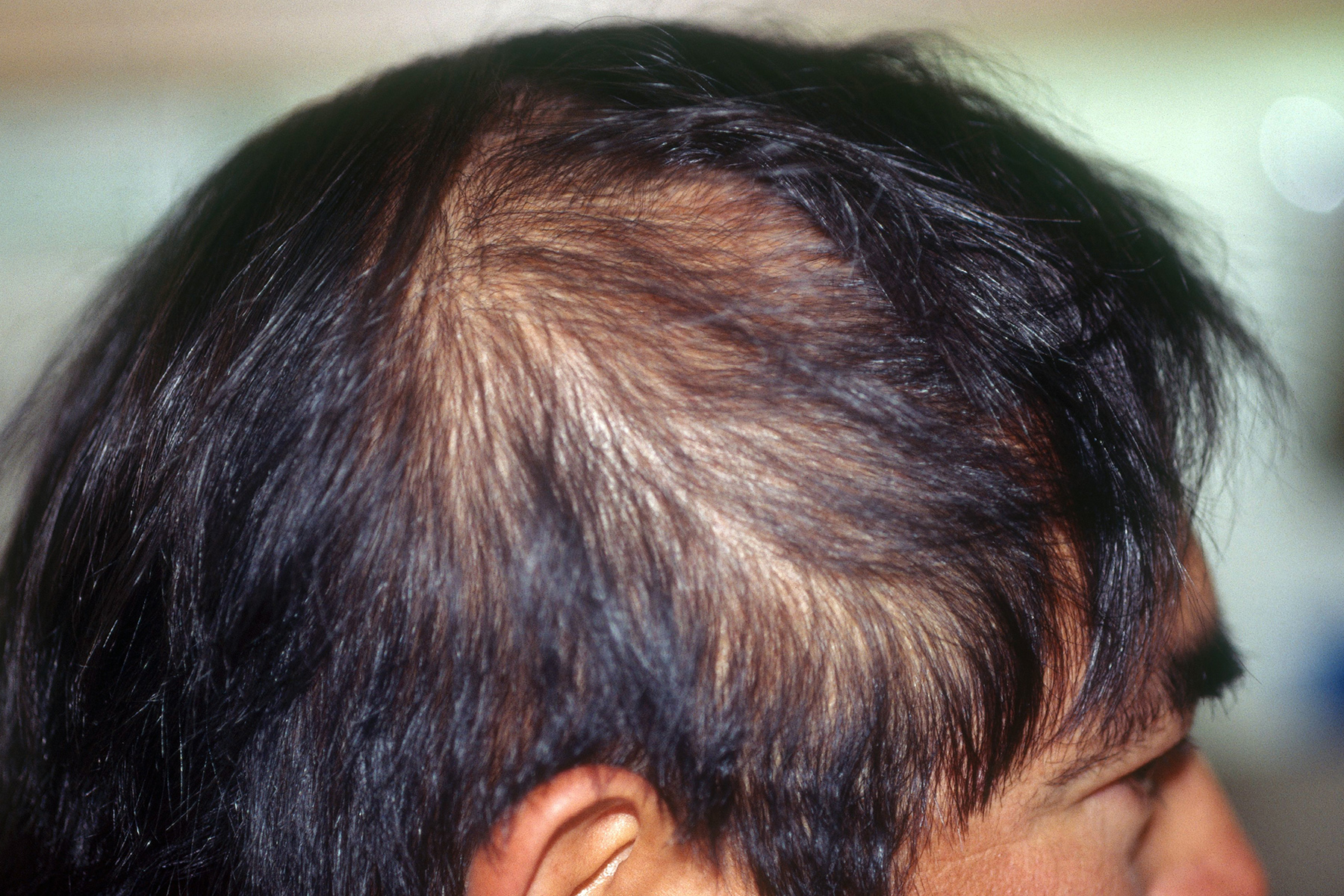What is Hair Loss?
Alopecia refers to hair loss that may be partial or complete, localised or generalised due to external or internal factors. Typically, we lose roughly 100 hairs a day, but if you lose more than that (around 120-150 or more) or if you see specific areas of the scalp being affected, you must consult a doctor immediately.
Hair loss can affect any part of the body, including the scalp. The most common form of hair loss is androgenetic alopecia or patterned hair loss, and it develops gradually with time. Hair loss can affect anyone, but androgenetic alopecia is affecting people as early as in their 20s to 30s.

What are the causes of Hair Loss?
Several factors can trigger hair loss, including the following:
- Heredity – Positive family history can increase your chances of having androgenetic alopecia. Men may notice bald patches or a receding hairline, whereas women may observe thinning of hair at the parting and increased scalp visibility.
- Hormonal disorders – Hormonal imbalance during pregnancy or menopause trigger hair loss in women. Also, hormonal shifts due to the use of birth control pills, childbirth and hysterectomy can induce hair loss due to the shortening of the anagen phase. Insulin resistance can also result in hair loss. Men also suffer from hair loss due to hormonal imbalance.
- Poor lifestyle – Stress, improper diet, nutritional deficiencies, and poor lifestyle habits can cause hair loss.
- Medication – Use of chemotherapy to treat cancer leads to hair loss as a side effect.Tight hairstyles and chemical treatments – High-tension hairstyles such as tight ponytails may cause traction of hair follicles and lead to hair loss. Chemical treatments with the use of bleach, colour, and dye may lead to temporary hair loss.
- Other causes – Some other less known causes can include chronic illnesses related to thyroid disorders, lupus, and polycystic ovarian disease (PCOD). Crash diets, habits like nervous hair pulling or scalp rubbing, rapid weight loss, infections, allergies to hair dyes, hair cosmetics, conditions like Seborrheic dermatitis or Psoriasis of the scalp may trigger acute hair loss.
What are the signs & symptoms of Hair Loss?
- Excessive and consistent hair loss.
- Thinning of hair from the crown area.
- Appearance of bald patches that are usually circular.
- Sudden loss of hair due to fungal scalp infection accompanied with pain or itching.
- Patchy hair growth.
- A receding hairline in the form of the letter M.
Types Of Hair Loss:
- Androgenetic Alopecia – It is a common form of hair loss that can affect both men and women as early as during teenage with the risk increasing with age.
- Male Pattern Baldness – Hair loss occurs in a well-defined pattern, beginning above both the temples. Over time, the hairline recedes to form a characteristic ‘M’ shape. Hair also thins at the crown (near the top of the head), often progressing to partial or complete baldness.
- Female Pattern Baldness – Here, the hair becomes thinner over the top of the head with the midline parting becoming more pronounced. However, the hairline does not recede. This type of hair loss in women rarely leads to total baldness.
- Telogen Effluvium – It is the most common form of diffuse hair loss that affects the scalp coverage adversely. It occurs around three months after a triggering event and is self-limiting, usually lasting for about six months.
- Alopecia Areata – It is a hair loss condition that causes discrete round bald patches appearing on different parts of the scalp with the remaining hairs on the head being entirely unaffected. However, it can eventually lead to total hair loss. It occurs when the immune system attacks and destroys healthy body tissue.
- Trichotillomania – It is a type of alopecia caused by the repeated pulling of hair. Doctors associate this type of alopecia with an impulse control disorder.
- Involutional Alopecia – It is a form of hair loss that occurs because of the natural ageing process. The primary cause of this form of hair loss is the shortening of the anagen (growth) phase of the hair growth cycle. In this case, hair does not grow as fast as it sheds.
- Scarring Alopecia – Also known as cicatricial alopecia, is a rare condition caused when inflammation or scarring due to various diseases hampers the scalp’s natural ability to grow hair.

How to prevent Hair Loss?
- Avoid using harsh chemical hair products as well as heat styling tools such as straighteners and perming irons.
- Practice a healthy hair care routine and use a mild shampoo twice or thrice a week to keep your hair clean. The frequency of shampooing depends on your hair type and the exposure to dust and pollution.
- Eat a balanced diet rich in essential nutrients and vitamins such as iron, vitamin B12, Vitamin D, protein, and Vitamin E.
- Adopt a healthy lifestyle and keep stress at bay by exercising regularly or practising yoga or meditation.
- Avoid hairstyles that put excessive traction on the hair.


